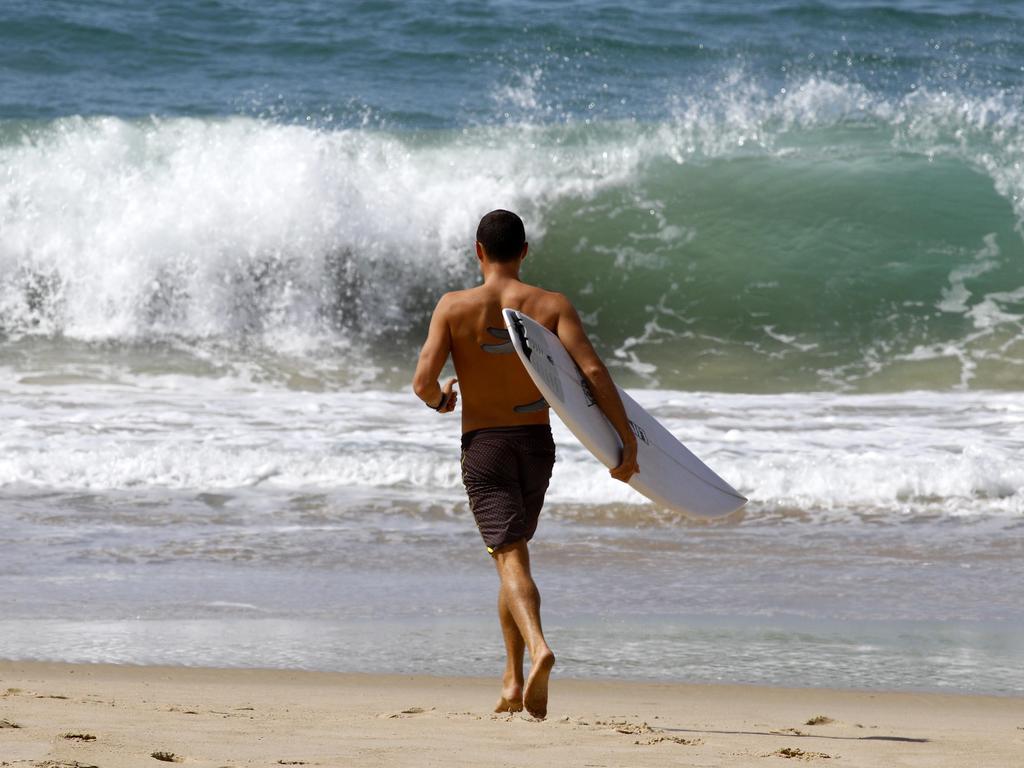Queensland: beautiful one day, economically broken the next
The Gold Coast will have shed about 10 per cent of its jobs by the end of next month, as a border shutdown threatens the crucial winter holiday season.

The Gold Coast will have shed about 10 per cent of its jobs by the end of next month, as a border shutdown blocks interstate visitors and threatens to cripple Queensland’s tourism industry ahead of the crucial winter holiday season.
The research emerged as Premier Annastacia Palaszczuk defended the decision as essential to protecting Queenslanders’ health, despite criticism from federal Tourism Minister Simon Birmingham saying there was “no reason” to wait until September to reopen the border if Australia continued to contain the coronavirus.
Queensland continued to lock down its borders as NSW Premier Gladys Berejiklian announced regional travel in her state would again be allowed from June 1 to boost NSW tourism.
Queensland Tourism Industry Council chief executive Daniel Gschwind cornered Ms Palaszczuk at parliament on Tuesday, asking her if the government would stick to its written road map setting July 10 as the likely date for interstate travel resuming. Mr Gschwind said that if the border did not open until September, as Ms Palaszczuk said on Monday was likely, entire regions such as Cairns, the Whitsundays and the Sunshine Coast would miss their peak winter season and be entirely “demoralised”.
Dutch tourist Kim van der Jooij, who arrived on the Gold Coast from Sydney to start work as an au pair the day before the border closed, said she could understand why visitors from the southern states flocked to Queensland in winter. “It’s much better here,” she said. “I really enjoy the weather and the beaches. It’s such a lovely place and I hope it is back to normal soon.”
New economic estimates suggest the continued shutdown of Queensland’s borders due to the COVID-19 pandemic is having a devastating effect on tourism-reliant regions. A report commissioned by the Cairns Regional Council found the city’s economy will have shrunk by $386m by the end of June, with 7700 jobs lost.
Using figures from the respected National Institute for Economic and Industry Research, the report paints an even worse picture for the Gold Coast, estimating job losses of more than 30,500 — or 10 per cent of the workforce — and a 16.8 per cent plunge in the regional economy.
The estimates show the Gold Coast economy will have gone backwards by more than $1.5bn and shed one job in 10 by the end of next month as a result of the shutdown aimed at stopping the spread of COVID-19.
The report said the key to a revival of Cairns’s economic fortunes would be the resumption of domestic flights, bringing visitors to the far north of the state.
Of the 10 regional economies faring worst from the crisis, the report says five are in tourism-dependent Queensland: the Gold Coast, Cairns, the Sunshine Coast, Townsville and the Fraser Coast.
Warwick Bourguignon, who owns the luxurious Coconut Grove resort in Port Douglas, north of Cairns, said interstate trade was “absolutely crucial”.
“We’re all hurting … we’re still here but, come September, I don’t know how many people will be able to open their door,” he said.
Michael Nelson from Cairns-based Pinnacle Tourism Marketing said small businesses would struggle to survive without interstate visitors this winter. “The industry has been pretty shocked with the dialogue that has come out in the past 24 hours that differs so greatly from the road map that was put out two weeks ago.”
Ms Palaszczuk acknowledged it was a “heartbreaking” decision to close the border, given the impact on the industry, but she would “not put Queenslanders’ health at risk”. The Premier said she would follow Chief Health Officer Jeannette Young’s medical advice.
Dr Young has said that the best-case scenario was for the border to reopen in July, but that is unlikely and would require four weeks of no community transmission in NSW and Victoria.







To join the conversation, please log in. Don't have an account? Register
Join the conversation, you are commenting as Logout